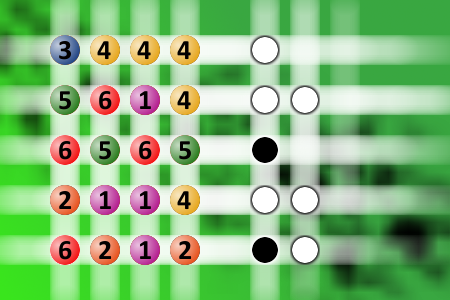What a winning combination?
The computer chose a secret code (sequence of 4 digits from 1 to 6). Your goal is to find that code. Black circles indicate the number of hits on the right spot. White circles indicate the number of hits on the wrong spot.
Fact or fiction?
Fact or fiction (you make the call):
1. Marriages are made in heaven. But so again, are thunder and lightning.
2. After marriage, husband and wife become two sides of a coin… they can’t face each other, but, they still stay together.
3. Married life is very frustrating. In the first year of marriage, the man speaks and the woman listens. In the second year, the woman speaks and the man listens. In the third year, they both speak and the neighbours listen..
4. When a man opens the door of his car for his wife, you canbe sure of one thing: either the car is new or the wife is.
5. Marriage is when a man and woman become as one. The trouble starts when they try to decide which one.
6. Before marriage, a man will lie awake all night thinking about something she says. After marriage, he will fall asleep before she finish.
7. Every man wants a wife who is beautiful, understanding, economical, and a good cook. But the law allows only one wife.
8. They say when a man holds a woman’s hand before marriage, that is LOVE. After marriage, that is SELF DEFENSE.
9. A wife becomes a “SEX OBJECT” when every time the husband asks for sex she objects!
10. Marriage is the only war where you get to sleep with the enemy.
11. There are two four-letter words that are offensive to men in marriage : “don’t” and “stop”, unless, they are used together (“don’t stop”).
12. Marriage is an institution where the man loses his Bachelor’s Degree and the woman gets her Master’s Degree.
13. In marriage, a man can have words with his wife, but, a woman can have paragraphs with her husband.
14. Marriage is love. Love is blind. Therefore, marriage is an institution for the blind.
15. There are 3 stages of SEX in a married life: Tri-weekly, try weekly and try weakly.
16. LOVE is a long sweet dream; MARRIAGE is the alarm clock.
17. When a newly married man looks happy, we know why. But, when a 10-year married man looks happy, we wonder why.
18. Marriage is not a word. It is a sentence … a LIFE SENTENCE.

